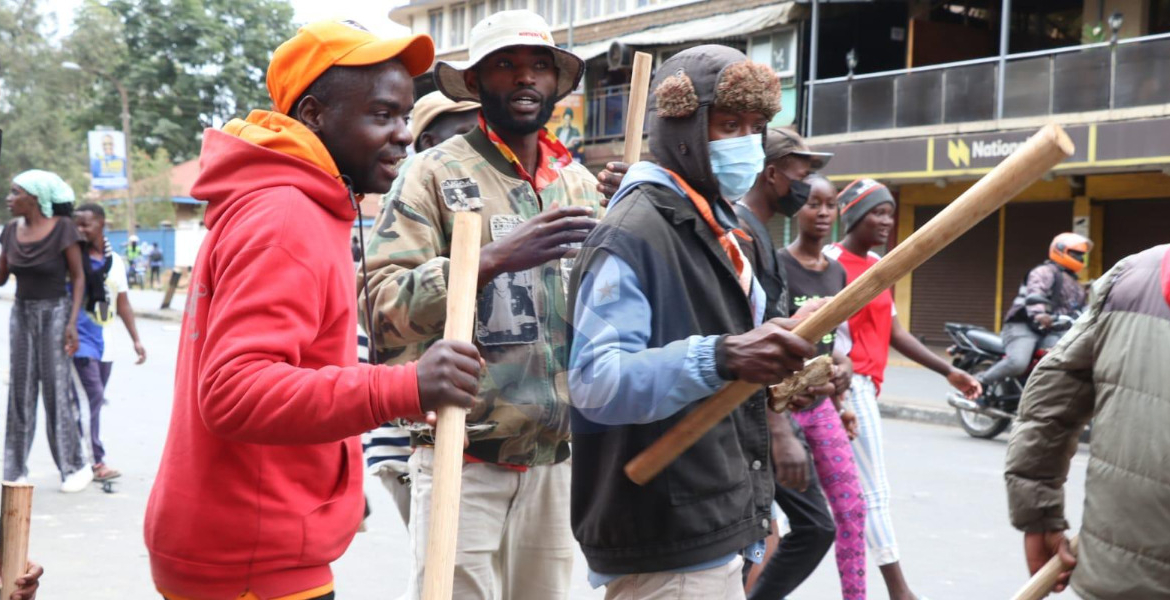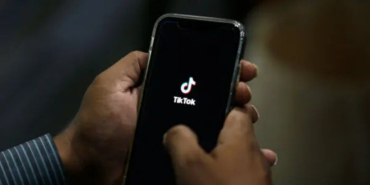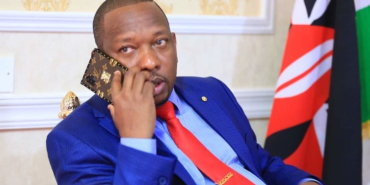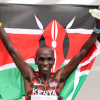Criminal Gangs Attack Protesters as Ojwang Demonstrations Rock Nairobi

The Central Business District (CBD) of Nairobi descended into chaos on Tuesday as protests demanding justice for the death of Albert Ojwang', a teacher and social media influencer, escalated into violent confrontations.
The demonstrations, initially sparked by outrage over Ojwang's death in police custody on June 7, devolved into a volatile mix of clashes between protesters, alleged hired goons, and law enforcement, creating a climate of fear and instability.
The protests, centred around key locations near Moi Avenue and Kenyatta Avenue, intensified throughout the day. Witnesses have reported the emergence of armed youths who attacked demonstrators, attempting to disperse them from the CBD. These assailants, wielding clubs, engaged in running battles with protesters, significantly escalating the unrest.
Compounding the situation, opportunistic criminals exploited the disorder, launching daylight attacks on pedestrians in the east-side backstreets. Victims report being chased into public transport vehicles as they desperately tried to escape the muggers. This surge in criminal activity prompted businesses in high-traffic areas such as Luthuli Avenue, River Road, and Latema Road to shut down, with traders standing guard outside their premises to prevent looting.
While police forces and city officials focused their deployment in the western section of the CBD, near Parliament and critical government installations, other areas were left vulnerable. This strategic focus allowed rogue elements to capitalise on the situation, deepening the crisis. Eyewitness accounts reveal that groups of youths dressed in heavy clothing and masked faces moved through the city, clashing with protesters. These groups, armed with clubs, forcefully dispersed demonstrators. These organised factions have been observed in previous demonstrations, attempting to intimidate activists.
Their presence diverted attention from the calls for justice, shifting the focus toward confrontations. Adding to the turmoil, large numbers of motorcycle riders, some carrying multiple passengers, moved through the city, intimidating demonstrators. Protesters retaliated, intercepting and attacking groups of riders suspected of suppressing the movement. In one incident, an alleged attacker was reportedly killed, and at least two motorcycles were set ablaze.
Police further escalated tensions by deploying tear gas across multiple protest hotspots. These actions affected both demonstrators and ordinary civilians, who were caught in the crossfire of suffocating smoke. Despite the mayhem, protesters remain steadfast in their demands for full accountability in Ojwang's death. Even with Deputy Inspector General of Police Eliud Lagat stepping aside on Monday, protesters insist that his temporary withdrawal is insufficient, demanding his outright resignation. They argue that his continued presence in the force, even under investigation, has undermined justice and transparency.
The unrest has severely disrupted movement within Nairobi, with major roads, including Thika Road and Uhuru Highway, blocked. The demonstrators' demands extend beyond Ojwang's case to broader concerns about police brutality, government accountability, and the treatment of young activists mobilising for change.








Add new comment